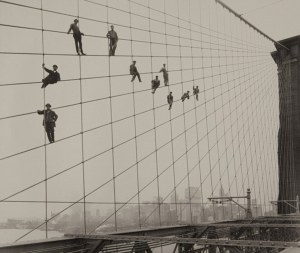On Saturday, I was walking past George Heriot’s School on Lauriston Place again. This time, with Longsufferinggirlfriendoftheblogbeth. We carried on behind the back of the National Museum of Scotland, and the dome of the Old College seemed to both hang directly and vastly above us, and stubbornly remain blocks away.
It was neither, of course. The dome was at the far end of the quad as usual, as we approached the Old College from the south-west.

[Click here to get an extra dose of apoplexy every week.]
À propos, I suppose. Beth and I were going to see the exhibition of Christopher Orr’s paintings at the Talbot Rice Gallery, The Beguiled Eye. I had been at a night of discussion about the work a couple of weeks previously, during which various academics spoke about Orr’s work in the context of Romanticism, Gothicism, science fiction and technology. The paintings had blown me away.
I’m not going to infringe on the artist’s rights by reproducing them here, but I urge you to visit some of the images hosted by his representatives, Hauser & Wirth, here. Or even better, get along to the Talbot Rice Gallery in the Old College before Valentine’s Day, if that’s feasible.

The pictures accompanying this post are just images of paintings in the public domain that Orr’s work evokes for this beguiled but uneducated eye. In the absence of the works themselves, I fall back on words, as is my wont. We picked up a copy of the monograph accompanying the exhibition, produced by jrp|ringier and including contributions by Pat Fisher, Max Hollein, and The Lonely Piper.
But perhaps most interesting for the purposes of the blog was a conversation printed in the monograph between Orr and Fisher, that touched upon Orr’s method of production. The artist talks about how he starts by populating a scene, then building up the background, and removing and replacing features and settings. He notes that in his earlier work, “mistakes would be carefully overpainted,” but now his method has changed.
These elements were all part of the history of the painting, and I feel they should remain there, to an extent. — Christopher Orr

This remark resonates with the stroke survivor, and perhaps more so, the survivor of a haemorrhagic stroke. While the more common ischemic stroke seems to be randomly visited upon the unfortunate and blameless conferree, the recipient of the haemorrhagic stroke may feel impelled to ask questions, depending on the exact circumstances of her or her event. Should I have gone on that diet? Taken my drugs more religiously? Avoided so much stress? Drunk less? Taken more exercise? Been less angry? And on and on and on.
Longsufferingetcetc had discussed with me, well before The Event, the importance of being able to own my prior mistakes and include them in my narrative. It’s the first step in being able to forgive oneself. That may sound all very new-agey and self-indulgent, but I’ve come to believe it’s truly important.

How can we learn from our mistakes, if we brush them under the carpet? How can we accept our present lives, without accepting the choices and accidents and circumstances that led us to them? And how can we paint our paintings and write our stories — and live our lives in linear, forward-facing directions — without allowing ourselves unfettered access to our past experiences?
Review-y style bit at the bottom: Christopher Orr: The Beguiled Eye runs at The White Gallery at the Talbot Rice until February 14, 2015. The second part of the Talbot Rice Gallery’s Until Only The Mountain Remains project takes place on 6 Feb, 2015, with a night of storytelling of new fictions inspired by The Beguiled Eye.





Excellent. Thank you for this.
My pleasure; glad you like it. A lucky find on my part, but I’m really glad I did. As I mentioned in the Tiny Letter, there’s something about the unspoken sensibility of the work that’s really stuck with me.
Big congrats on getting published!
And oohhh, Christopher Orr. I’m a fan now.
I have similar size perception encounters with famous monuments and those kinds of things. They always tend to be way bigger in my mind before I see them…though I’ve counteracted most of that now. I’m not as shocked as I was at 13 because travel has tampered my expectations.
The Mona Lisa also tends to be famously shockingly diminutive. I was warned about that before my first viewing, but I’m sure there must have been other paintings that have caught me off guard.
Great stuff, innit?
I wonder if, when they have to represent wee M-L on screen (like in, say, The City of Death) they use bigger reproductions so viewers aren’t all, ‘That’s far too wee!’ Well, this week’s post is about representations and perceptions of truth, so it all links, I guess.
The weird thing about returning to Edinburgh is that, while one might expect things to be smaller, my perception of monuments and monumental buildings like the Scott Monument and Fettes Academy is that they are primarily more squat. Not smaller, but more substantial.
Happy holidays, mate. Hope you’re enjoying a little down time.